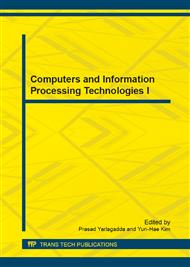[1]
Lau, Rynson W. H.; Yen, Neil Y.; Li, Frederick; et al. Recent development in multimedia e-learning technologies. WORLD WIDE WEB-INTERNET AND WEB INFORMATION SYSTEMS, 17(2), pp.189-198(2014).
DOI: 10.1007/s11280-013-0206-8
Google Scholar
[2]
Hsia, Jung-Wen; Chang, Chia-Chi; Tseng, Ai-Hua. Effects of individuals' locus of control and computer self-efficacy on their e-learning acceptance in high-tech companies. BEHAVIOUR & INFORMATION TECHNOLOGY, 33(1), pp.51-64 (2014).
DOI: 10.1080/0144929x.2012.702284
Google Scholar
[3]
Yu-Chien Chen, Ren-Hung Hwang, Cheng-Yu Wang. Development and evaluation of a Web2. 0 annotation system as a learning tool in an E-Learning2. 0 environment. Computer& Education, 58, pp.1094-1105 (2012).
Google Scholar
[4]
DeLone W.H., & McLean, E.R. The DeLone and McLean model of information systems success: a ten-year update. Journal of Management Information Systems, 19(4): 9–30 (2003).
DOI: 10.1080/07421222.2003.11045748
Google Scholar
[5]
Palacios-Marques, Daniel; Cortes-Grao, Rocio; Lobato Carral, Clemente. Outstanding knowledge competences and web 2. 0 practices for developing successful e-learning project management. INTERNATIONAL JOURNAL OF PROJECT MANAGEMENT, 31(1), pp.14-21(2013).
DOI: 10.1016/j.ijproman.2012.08.002
Google Scholar
[6]
Huang, Shiu-Li; Shiu, Jung-Hung. A User-Centric Adaptive Learning System for E-Learning. EDUCATIONAL TECHNOLOGY & SOCIETY, 15(3), pp.214-225(2012).
Google Scholar
[7]
Chen, Yu-Chien; Hwang, Ren-Hung; Wang, Cheng-Yu. Development and evaluation of a Web 2. 0 annotation system as a learning tool in an e-learning environment. COMPUTERS & EDUCATION, 58(4), pp.1094-1105 (2012).
DOI: 10.1016/j.compedu.2011.12.017
Google Scholar
[8]
Martin, Marie. Web 2. 0-based e-learning. BRITISH JOURNAL OF EDUCATIONAL TECHNOLOGY, 42(6), p. E172-E173 (2011).
Google Scholar
[9]
Wang, Hei Chia; Chiu, Yi Fang. Assessing e-learning 2. 0 system success. COMPUTERS & EDUCATION, 57(2), pp.1790-1800(2011).
Google Scholar
[10]
Cristea, Alexandra I.; Ghali, Fawaz. Towards adaptation in e-learning 2. 0. NEW REVIEW OF HYPERMEDIA AND MULTIMEDIA, 17(2), pp.199-238(2011).
DOI: 10.1080/13614568.2010.541289
Google Scholar
[11]
Huang, Yueh-Min; Yang, Stephen J. H.; Tsai, Chin-Chung. Web 2. 0 for interactive e-learning. INTERACTIVE LEARNING ENVIRONMENTS, 17(4), pp.257-259 (2009).
DOI: 10.1080/10494820903195108
Google Scholar
[12]
Pena-Ayala, Alejandro; Sossa, Humberto; Mendez, Ignacio. Activity theory as a framework for building adaptive e-learning systems: A case to provide empirical evidence. COMPUTERS IN HUMAN BEHAVIOR, 30, pp.131-145(2014).
DOI: 10.1016/j.chb.2013.07.057
Google Scholar
[13]
Persico, Donatella; Manca, Stefania; Pozzi, Francesca. Adapting the Technology Acceptance Model to evaluate the innovative potential of e-learning systems. COMPUTERS IN HUMAN BEHAVIOR, 30, pp.614-622(2014).
DOI: 10.1016/j.chb.2013.07.045
Google Scholar


